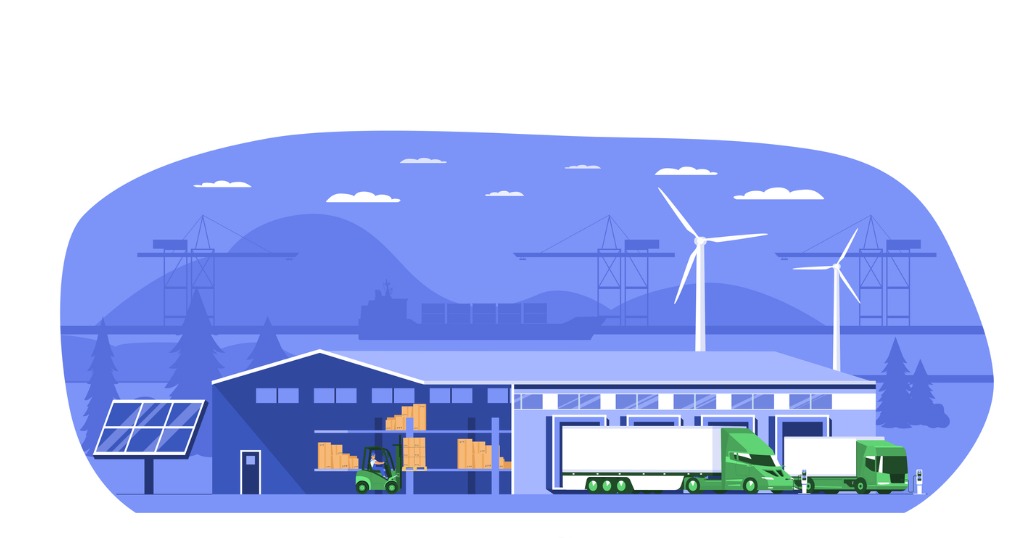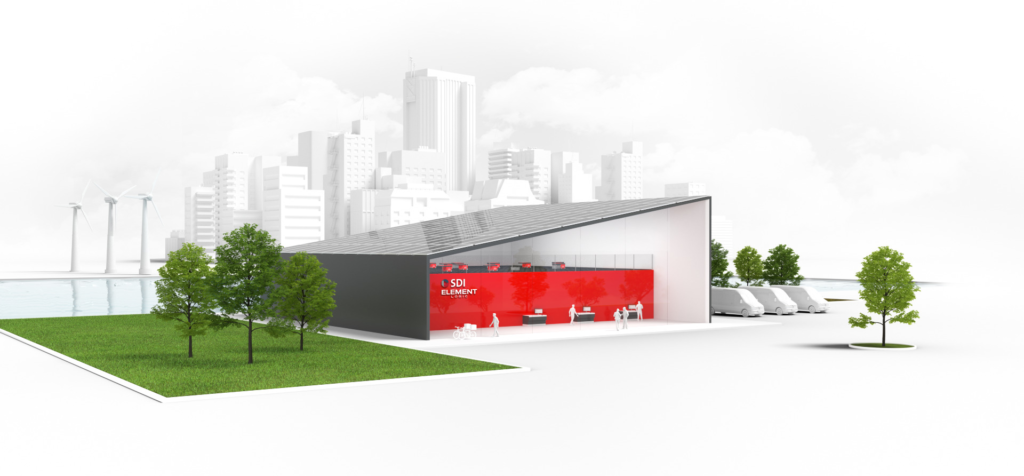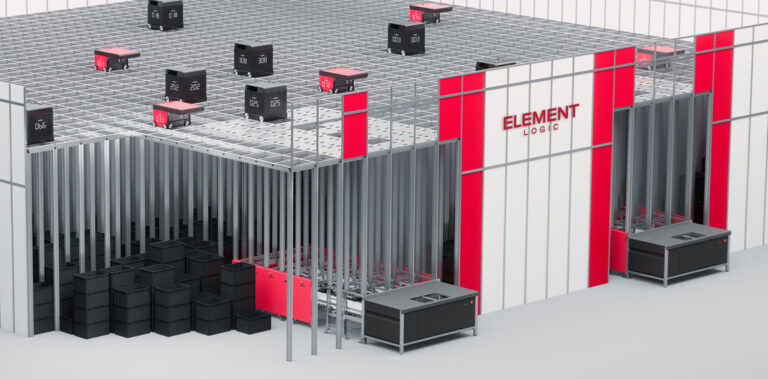Sustainability in supply chain and warehouse operations has become paramount in today’s business landscape. With environmental concerns escalating, eco-friendly practices are no longer a selective choice but a necessity.
Reducing the carbon footprint, minimizing waste, and promoting responsible business conduct align with both regulatory requirements and the values of increasingly conscious consumers. By prioritizing sustainability, companies can ensure long-term viability, enhance their reputation, and contribute to a healthier planet while remaining competitive in an evolving market.
What is supply chain sustainability?
Supply chain sustainability is a holistic approach to managing and optimizing the environmental, social, and economic impacts of a supply chain throughout its entire life cycle, from the sourcing of raw materials to the delivery of the final product to end users or consumers.
Below is a general overview of what supply chain sustainability entails and how it influences the various stages of the supply chain.
What are some examples of supply chain sustainability?
Supply chain sustainability is about considering the environmental, social, and economic impacts at every stage of the supply chain lifecycle. By integrating the sustainable practices mentioned below, companies can reduce their environmental footprint, enhance their reputation, and contribute to a more responsible and resilient supply chain ecosystem.

Responsible and Raw Material Sourcing
Sustainable supply chains begin with the responsible sourcing of raw materials. This involves selecting suppliers that adhere to ethical labor practices, minimize environmental impact, and engage in fair trade.
In addition to this, consideration of the environment and social consequences of raw material extraction and production is essential to reduce negative impacts on communities and ecosystems.
Transportation
When it comes to shipping from factories in Asia to the U.S. and Canada, there are more efficient maritime corridors that shipping companies can use to reduce their carbon footprint. Many shipping companies are also diving deeper into lowering their carbon emissions by reducing their use of coal from 100% to about 60% and using renewable energy to make up the other 40%.
Sustainable transportation choices, such as using lower-emission vehicles or optimizing distribution routes to reduce fuel consumption, help decrease the carbon footprint of the supply chain operation.
Ethical Manufacturing
During the manufacturing process, sustainable practices can involve energy-efficient production methods, waste reduction, and the use of eco-friendly materials to reduce the amounts of harmful emissions that can be created during the manufacturing process. By minimizing these emissions your business becomes capable of not only becoming more environmentally conscious, but you may also conserve other resources while simultaneously optimizing your supply chain processes.
Another consideration in ethical manufacturing is being transparent during the manufacturing process. According to the Harvard Business review, studies show that if your business practices safe and sustainable manufacturing, as well as actively displaying that to the consumer base, “consumers may be willing to pay 2% to 10% more for products.”
Eco-friendly packaging
When a company chooses to incorporate eco-friendly packaging into their distribution centers, such as utilizing biodegradable or recyclable packing, they can drastically reduce the negative impacts of using non-recyclable plastic products.
In addition to eco-friendly packaging, educating customers about the environmental and social aspects of your business’s green products can influence their choices and behavior, encouraging more sustainable consumption. Recycling initiatives have shown a positive impact on a company’s public perception while also extending their product’s lifecycle’s contribution to sustainability.
What is green warehousing?
Green warehousing is an approach to warehouse operations that focuses on minimizing the environmental impact of a business while simultaneously optimizing efficiency and cost-effectiveness. It aims to reduce the consumption of resources, minimize waste, and lower greenhouse gas emissions. There are a few key principles and concepts which are important to review.
Establishing and maintaining an energy-efficient infrastructure is an important factor of green warehousing. This begins with the design and construction of the warehouse itself which would include energy-efficient recycled, repurposed, and otherwise green building materials, insulation, and lighting systems to reduce energy consumption. In addition to these, renewable energy sources (like solar panels) can generate clean energy for warehouse operations as well as smart building management systems to monitor and control energy usage (ensuring it’s optimized for the current needs of the warehouse).
Optimizing your business’s inventory management is crucial for green warehousing. It involves maintaining “just-in-time” inventory levels to reduce excess stock, which is a large contributor towards waste and increased energy consumption for storage. Just-in-time inventory levels means keeping your inventory levels as manageably possible. To properly implement that strategy, your warehouse will need to incorporate advanced forecasting and demand planning tools to help your warehouse better predict customer needs (which also minimizes excess inventory as well as transportation emissions).
As we briefly mentioned in the section above, reducing your company’s waste production is vital in moving towards a greener warehouse operation. Some more examples of this would be:
- Introducing a recycling program for materials like cardboard and plastic packaging.
- Implementing practices in your warehouses to refurbish or repair equipment and pallets instead of disposing of them.
- Switching to sustainable packing materials, such as reusable pallets and eco-friendly packaging (recycled or re-used).

The Evolution of Green Technology
The implementation of these sustainable, and efficient, material handling practices within your warehouse is essential in the ever-evolving industry. Another consideration businesses should consider is the involvement of Green Technologies, such as conveyor systems, or goods-to-person systems like AutoStore.
Initial assumptions may lead individuals to think that the incorporation of more technology, which is almost entirely reliant on energy, would prove to be a hinderance on green initiatives. This, however, is not the case.

These technologies have ergonomic designs that have shown a reduction in the amount of workplace injuries and an increase in overall productivity, as well as contributing to the sustainability of warehouse operations. “In fact, ten AutoStore robots use the same level of energy as one vacuum cleaner and the robots can easily run on solar energy, making them a perfect fit for sustainable warehouses.”
How to make a warehouse more environmentally friendly
Making a warehouse more environmentally friendly involves the combination of a few key steps. Let’s take a brief look at some of these features, and how their implementation can help make your warehouse greener.
Energy-Efficient Lighting
Replacing traditional high-intensity discharge (HID) or fluorescent lighting with energy-efficient Light Emitting Diodes (LED) would naturally be the first step in making your warehouse have more energy-efficient lighting. LEDs consume significantly less electricity and have a longer life span.
Another possible option would be installing motion sensors and smart lighting controls that automatically adjust lighting levels based on occupancy and natural light availability, which drastically reduces unnecessary energy consumption levels.

Optimizing Temperature Control
Improve the insulation of the warehouse to reduce heat exchange with the external environment, which will lead to lower energy consumption levels for heating and cooling.
Using energy-efficient heating, ventilation, and air conditioning (HVAC) systems will lead to a drastic reduction in not only energy bills, but also your overall energy output levels. These systems will need to be maintained regularly to ensure optimal performance.
Recycling and Energy-Saving Initiatives
When you choose to implement comprehensive recycling programs within your warehouse, you can expect some positive results. These results extend further than your business’s contribution to a greener future, primarily in the form of overall positive reviews from consumers who pride themselves in being part of tackling their carbon footprint from different angles.
Some recycling initiatives businesses incorporate include the separation, collection, and recycling of materials like cardboard, plastic, paper products, electronics, and proper disposal of hazardous materials.
Businesses can push for the use of sustainable packaging materials, like biodegradable or recyclable materials like pallets, containers, and shipping boxes. They can also implement water-saving measures, such as low-flow faucets and toilets to reduce water consumption in restrooms and break areas.

How SDI Element Logic supports sustainable warehouse practices
SDI Element Logic offers a multitude of warehouse automation solutions that are essential for implementing environmentally friendly initiatives. Their energy-efficient automation paired with fully optimized software reduces energy consumption while streamlining material handling within a warehouse operation. These initiatives not only reduce operational costs, but can also lower environmental impact, enhance compliance, and fortify a company’s reputation as a responsible, and sustainable, business leader.
Implementing greener solutions is becoming increasingly vital in a world facing climate change and resource depletion. They foster environmental responsibility, bolster cost-efficiency, and ensure business resilience while promoting a global commitment to sustainable practices. By partnering with SDI Element Logic, companies can boost their bottom line while contributing to a greener, and more sustainable future.
Visit our website here to get in contact with us to see how you can take your warehouse operations to the next, sustainable, level!


